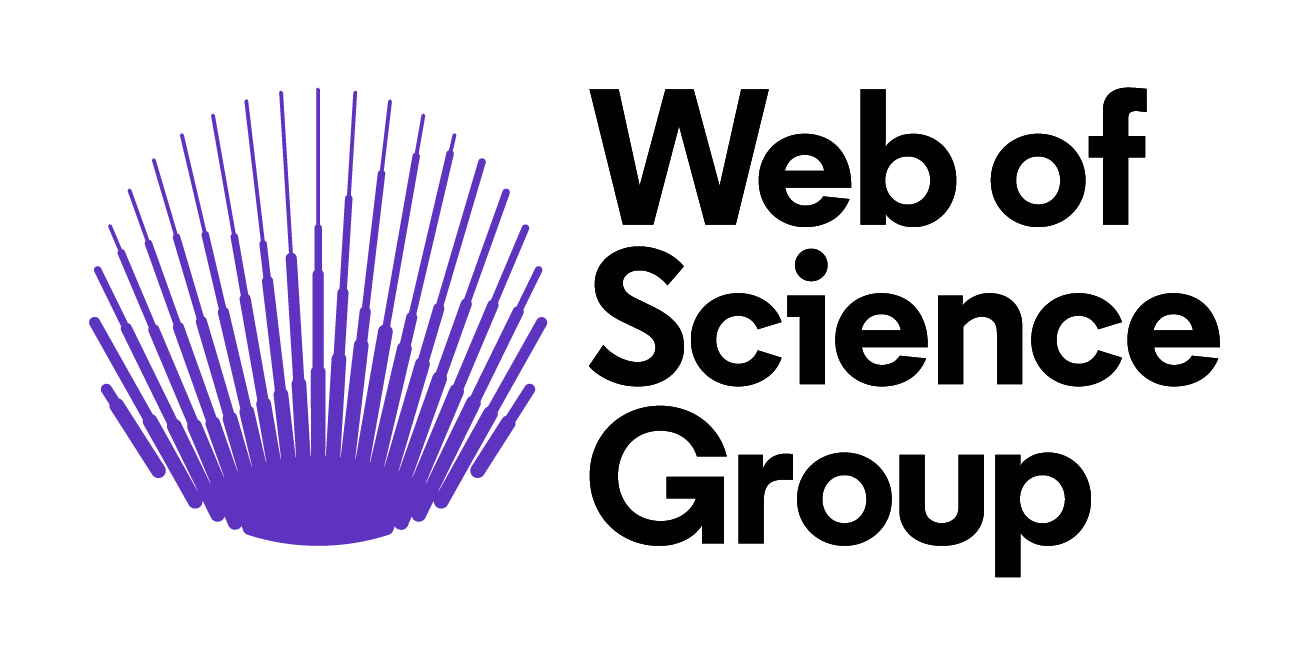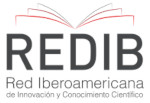Inteligência artificial na agricultura com aplicabilidade no setor sementeiro
DOI:
https://doi.org/10.48017/Diversitas_Journal-v6i3-1857Resumo
RESUMO: Métodos para classificação e identificação de atividades essenciais na análise das sementes é de grande importância técnica e econômica no setor agrícola e contribuem no valor acrescentado na produção final da cultura. Com a tecnologia no campo, demanda de solucionar diversos problemas, são inerentes a capacidade intelectual humana. O objetivo foi retratar desafios e as soluções evidentes no uso da inteligência artificial na agricultura e especificar a utilização desta atividade intelectual no setor sementeiro. Artigos revisados por pares sobre aprendizado de máquinas em sementes e inteligência artificial na agricultura foram relatados neste trabalho. O processamento de dados e imagens com uma visão de máquina se complementam através de um classificador em comum. Com a dinâmica de pesquisas atuais no ramo sementeiro, espera-se tendências que investigue em um futuro próximo, análise de dados característicos em sistemas de produção de sementes relacionado aos aspectos de beneficiamento, armazenamento, secagem e controle de qualidade.
PALAVRAS-CHAVE: Classificação de sementes, Futuro agrícola, Visão computacional.
Métricas
Referências
CINAR, A. C. Training feed-forward multi-layer perceptron neural network swith a tree-seed algorithm. Arabian Journal for Science and Engineering. v. 45, p. 10915 -10938, 2020. Doi: https ://doi.org/10.1007/S13369-020-04872-1.
ELFERINK, M.; SCHIERHORN, F. Global demand for food is rising. Can we meet it?Harvard Business Review. 4p. April 07. 2016. https://hbr.org/2016/04/global-demand-for-food-is-rising-can-we-meet-it.
ELMASRY, G.;MANDOUR, N.;WAGNER, MH.;DEMILLY, D.;VERDIER, J.;BELIN. E., ROUSSEAU, D. Utilization of computer vision and multispectral imaging techniques for classification of cowpea (Vignaunguiculata) seeds. Plant Methods,v.15, n. 24, 2019. Doi: https://doi.org/10.1186/s13007-019-0411-2.
FAO.Food and Agriculture Organization of the United Nations. Global agriculture towards 2050: high-level expert forum on how to feed the world in 2050, 12-13. Oct 2009 by Food and Agriculture Organization of the United Nations, 2009.https://reliefwe b.int/report/world/global-agriculture-towards-2050-high-level-expert-forum-how-feed-world-2050-12-13-oct.
FAO. Food and Agriculture Organization of the United Nations, 2017. The state of food and agriculture leveraging food systems for inclusive rural transformation.978-92-5-109873-8. 2017, p.1-181.
FRANÇA-SILVA, F.; REGO,C. H. Q.; GOMES-JUNIOR, F. G.; MORAES, M. H. D.; MEDEIROS, A. D.; SILVA C. B. Detection of Drechsleraavenae(Eidam) Sharif [Helminthosporiumavenae(Eidam)] in Black Oat Seeds (Avena strigosaSchreb) using multispectral imaging. Sensors,v.20, n. 12, p.33-43, 2020. doi: https://doi.org/10.3 390/s20123343.
GRANITTO, P. M.; NAVONE, H. D.; VERDES, P. F.; CECCATTO, H. A. Weed seeds identification by machine vision, Computers and Electronics in Agriculture,v. 33, n. 2, p. 91-103, 2002. Doi: https://doi.org/10.1016/S0168-1699(02)00004-2.
HAYKIN, S. Neural networks: a comprehensive foundation. New Jersey: Prentice Hall; Upper Saddle River, 1999. 218p.
JAHANI, A. Sycamore failure hazard classification model (SFHCM): an environmental decision support system(EDSS) in urban green spaces.International Journal of Environmental Science and Technology.v. 16, p. 955–964. 2019a Doi: https://doi.org/10.1007/s13762-018-1665-3.
JAHANI, A. Forest landscape aesthetic quality model (FLAQM): A comparative study on landscape modelling using regression analysis and artificial neural networks. Journal of Forest Science.v. 65, n. 2, 61–69, 2019b. Doi: https://doi.org/10.17221/86/2018-JFS.
JHA, K.; DOSHI, A.; PATEL,P.; SHAH, M. A comprehensive review on automation in agriculture using artificial intelligence, Artificial Intelligence in Agriculture, v. 2, p. 1-12, 2019. Doi: https://doi.org/10.1016/j.aiia.2019.05.004.
KAUR, K.Machine learning: applications in Indian agriculture. International Journal of Advanced Research in Computer and Communication Engineering,v.5, n. 4.2016.
KIM, R. G.; EVANS; W. M. IVERSEN. Remote sensing and control of an irrigation system using adistributed wireless sensor network. IEEE Transactions on Instrumentationand Measurement,v. 57, n. 7, p. 1379-1387, 2008. Doi: 10.1109/TIM.20 08.917198.
LIAKOS,K.;BUSATO,P.;MOSHOU,D.;PEARSON,S.;BOCHTIS, D.Machine learning in agriculture: A review. Sensors,v. 18, n. 8, p.2674,2018. Doi: 10.3390/s18082674.
MAHAJAN, S.; MITTAL, S. K; DAS, A. Alternative test approach based on machine vision for testing physical purity, viability and vigor of soybean seeds(Glycinemax). Journal of Food Science and Technology, v. 55, n. 10, p. 3949-3959. Doi: https://doi.org/10.1007/s13197-018-3320-x.
MEDEIROS, A. D. de; PINHEIRO, D. T.; XAVIER, W. A.; SILVA, L. J. da; DIAS, D. C. F. dos S. Quality classification of Jatrophacurcasseeds using radiographic images and machine learning. Industrial Crops and Products,v. 146, p. 112-162, 2020a. Doi: https://doi.org/10.1016/j.indcrop .2020.112162.
MEDEIROS,A.D.de; SILVA, L. J.; SILVA, J. M.;DIAS,D.C.F.S.;PEREIRA,M.D.IJCropSeed: An open-access tool for high-throughput analysis of crop seed radiographs. Computers and Electronics in Agriculture,v. 175, p. 105555, 2020b. Doi: https://doi.org/1 0.1016/j.co mpag.2020.105555.
MONTEIRO, R. C. M.;GADOTTI,G.I.; MALDANER, V.; CURI, A. B. J.; BARBARA NETO, M. Image processing to identify damage to soybean seeds. Ciência Rural, v. 51, p. 1-8, 2021. Doi:https://doi.org/10.1590/0103-8478cr20200107.
MORAES, N. A. B. Predição de ranqueamento de lotes de sementes de milho por inteligência artificial. 2020, 29 f. Dissertação de Mestrado em Ciências –Programa de Pós-Graduação em Ciência e Tecnologia de Sementes. Universidade Federal de Pelotas, Pelotas/RS.2020.link: http://guaiaca.ufpel.edu.br/handle/prefix/5713.
MORETI,M.P.; OLIVEIRA, T.; SARTORI, R.; CAETANO, W. Inteligência artificial no agronegócio e os desafios para a proteção da propriedade intelectual. Cadernos de Prospecção,v. 14, p. 60, 2021. Doi:http://dx.doi.org/10.9771/cp.v14i1.33098.
MOSAFFAEI, Z.; JAHANI, A.; ZARE, C. M. A.; GOSHTASB, H.; ETEMAD, V. SAFFARIHA, M. Soil texture and plant degradation predictive model (STPDPM) in national parks using artificial neural network (ANN). Journal Modeling Earth Systems and Environment, v. 6, p. 715–29, 2020. Doi: https://doi.org/10.1007/s40808-020-007 23-y.
MOSLEM, A.; YOUNESSI-HMAZEKHANLU, M.; RAMAZANI, S. H. R.; OMIDI, A. H.Artificial neural networks and multiple linear regression as potential methods for modeling seed yield of safflower (CarthamustinctoriusL.), Industrial Crops and Products,v. 127, p. 185-194, 2019. Doi: https://doi.org/10.1016/j.indcrop.2018.10.050.
OLESEN, M. H.; NIKNESHAN, P.; SHRESTHA, S.; TADAYYON, A.; DELEURAN, L. C.; BOELT, B.; GISLUM, R. Viability prediction of RicinuscummunisL. seeds using multispectral imaging. Sensors.,v. 15 n. 2, p. 4592-4604,2015. Doi: https://doi.org/10.3390/s150204592.
PANPATTE, D. G.Artificial intelligence in agriculture: an emerging era of research.Anand Agricultural University,Canada, p.1-8, 2018.
PANT, L. P. Digitally engaged rural community development. Journal of Agriculture, Food Systems, and Community Development,v. 6, n. 4, p.169-171, 2016. Doi: 10.5304/jafscd.201 6.064.005.
RASCHKA, S. Model evaluation, model selection, and algorithm selection in machine learning. arXiv,v. 3, p. 1-48, 2018. Doi: arXiv:1811.12808.
REHMAN, T. U.; SULTAN MAHMUD, M. D.; CHANG, Y. K.; JIN, J.; SHIN, J. Current and future applications of statistical machine learning algorithms for agricultural machine vision systems, Computers and Electronics in Agriculture,v. 156, p. 585-605. 2019. Doi: https://doi .org/10.1016/j.compag.2018.12.006.
SAFFARIHA, M.; JAHANI, A.; POTTER, D. Germination prediction of Salvia limbata seeds under ecological stress in protected areas: an artificial intelligence modeling approach. BMC Ecology,v. 20, 48, 2020. Doi: https://doi.org/10.1186/s12898-020-00316-4.
SAHA, D.; MANICKAVASAGAN, A. Machine learning techniques for analysis of hyperspectral images to determine quality of food products: A review, Current Research in Food Science,v. 4, p 28-44, 2021. Doi: https://doi.org/10.1016/j.crfs.2021.01.002.
SALAKEN, M. S.; ABBAS, K.; THANH, N.; SAEID, N. Seeded transfer learning for regression problems with deep learning. Expert Systems with Applications.v. 115, p. 565-577. 2018. Doi: https://doi.org/10.1016/j.eswa.2018.08.041.
SALIMI,Z.; BOELT. B. Classification of processing damage in sugar beet (Betavulgaris) seeds by multispectral image analysis. Sensors, v. 19, n. 10, p. 23-60, 2019. Doi: https://doi.org/10.3390/s19 102360.
SCHNEIDER, C. A.; RASBAND, W. S.;ELICEIRI, K. W. NIH Image to ImageJ: 25 years of image analysis. Nature Methods,v.9, p. 671-675, 2012. Doi: 10.1038/nmeth.2089.
SHARMA, A. SATISH, D.; SHARMA, S.; GUPTA, D. iRSVPred: A web server for artificial intelligence based prediction of major basmati paddy seed varieties. Frontiers in Plant Science, v. 10, p. 1791, 2020. Doi: 10.3389/fpls.2019.01791.
SINGH, G.; SINGH, A.; G. KAUR. Role of artificial intelligence and the internet of things in agriculture.16. Ed(s): KAUR, G.; TOMAR, P.; TANQUE, M. Artificial intelligence to solve pervasive internet of things issues, Academic Press, c. 16, p. 317-330, 2021. Doi: https://doi.org/1 0.1016/B978-0-12-818576-6.00016-.
SOUZA, S. de R.; LOPES, B.; LADISLAU, J.; RESIN GEYER, C. F.; DA ROSA, S. J. L.; AFONSO CARDOZO, A.; CORRÊA, Y. A.;GADOTTI,G.I.; BARBOSA, J. L. V. Continuous monitoring seed testing equipaments using internet of things. Computers and Electronics in Agriculture,v.158, p. 122-132, 2019. Doi:https://doi.org/10.1016/j.compag.2019.01.024.
TAGARAKIS, A.; LIAKOS, V.; FOUNTAS, S.; KOUNDOURAS, S.; GEMTOS, T. Management zones delineation using fuzzy clustering techniques in grapevines. Precision Agriculture,v. 14, n. 1, p. 18-39, 2013. Doi: https://doi.org/10.1007/s11119-012-9275-4.
TALAVIYA, T.; SHAH, D.; PATEL, N.; YAGNIK, H.; SHAH, M. Implementation of artificial intelligence in agriculture for optimisation of irrigation and application of pesticides and herbicides. Artificial Intelligence in Agriculture,v. 4, p. 58-73, 2020. Doi: https://doi.org/10.1016/j.aiia .2020.04.002.
TILLMANN, M. A. A.; MENEZES, N. L. Análise de Sementes. In: Sementes: Fundamentos científicos e tecnológicos.Ed. Universitária/UFPel, Pelotas, p. 138–198, c. 3, 2012.
TU, K.; WEN, S.; HENG, Y.; ZHANG, T.; PAN, T.; WANG, J.; WANG, J.; SUN, Q. A non-destructive and highly efficient model for detecting the genuineness of maize variety 'JINGKE 968′using machine vision combined with deep learning. Computers and Electronics in Agriculture,v. 182, p. 106002, 2021. Doi: https://doi.org/10.1016/j.compa g.2021.106002.
VARELA, N.; SILVA, J.; PINEDA, O. B.; CABRERA, D. Prediction of the corn grains yield through artificial intelligence. Procedia Computer Science,v. 170, p. 1017-1022, 2020. Doi: https ://doi.org/10.1016/j.procs.2020.03.080.
VIEIRA,E.M.de A.; NEVES, N. T. de A. T.; de OLIVEIRA, A. C. C.; de MORAES, R. M.; do NASCIMENTO, J. A. Avaliação da performance do algoritmo J48 para construção de modelos baseados em árvores de decisão. Revista Brasileira de Computação Aplicada,v. 10, p. 80-90, 2018.Doi: https://doi.org/10.5335/rbca.v10i2. 8078.
ZHOU, L.; ZHANG, C.; LIU, F.; QIU, Z.; HE, Y. Application of deep learning in food: a review. Comprehensive Reviews in Food Science and Food Safety, v. 18, p. 1793-1811, 2019. Doi: https://doi.org/10.1111/1541-4337.12492.
YANG,H.; LIUSHENG, W.;HONGLIJUNMIN, X.Wireless Sensor Networks for Intensive Irrigated Agriculture, Consumer Communications and Networking Conference, 2007. CCNC 2007. 4th IEEE,p.197-201. Las Vegas, Nevada. Jan. 2007.
WEN, L.; YANG, B.; CUI, C.; YOU, L.; ZHAO, M. Ultrasound-assisted extraction of phenolics from Longan fruit seeds (DimocarpuslonganLour.) With artificial neural network and its antioxidant activity. Food Analytical Methods,v. 5, p. 1244–1251, 2012. Doi: https://doi.org/10.1007/s12161-012-9370-1.
Downloads
Publicado
Como Citar
Edição
Seção
Licença
Copyright (c) 2021 Romário de Mesquita Pinheiro, Gizele Ingrid Gadotti, Rita de Cassia Mota Monteiro, Ruan Bernardy

Este trabalho está licenciado sob uma licença Creative Commons Attribution 4.0 International License.
O periodico Diversitas Journal expressa que os artigos são de unica responsabilidade dos Autores, conhecedores da legislação Brasileira e internacional. Os artigos são revisados pelos pares e devem ter o cuidado de avisar da possível incidencia de plagiarismo. Contudo o plagio é uma ação incontestavel dos autores. A Diversitas Journal não publicará artigos com indicios de Plagiarismos. Artigos com plagios serão tratados em conformidade com os procedimentos de plagiarismo COPE.
A violação dos direitos autorais constitui crime, previsto no artigo 184, do Código Penal Brasileiro:
“Art. 184 Violar direitos de autor e os que lhe são conexos: Pena – detenção, de 3 (três) meses a 1 (um) ano, ou multa. § 1o Se a violação consistir em reprodução total ou parcial, com intuito de lucro direto ou indireto, por qualquer meio ou processo, de obra intelectual, interpretação, execução ou fonograma, sem autorização expressa do autor, do artista intérprete ou executante, do produtor, conforme o caso, ou de quem os represente: Pena – reclusão, de 2 (dois) a 4 (quatro) anos, e multa.”


















